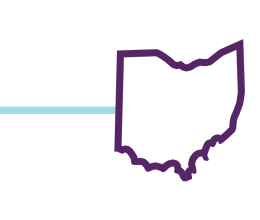Every now and then politicians get it right, and so it was with Ohio’s Medicaid expansion.
Following the implementation of the Affordable Care Act in 2013, Governor Kasich expanded Medicaid coverage to families earning up to about $40,000 a year for the typical family of three. Many women who previously could not afford health insurance benefited from the expansion as they now had access to prenatal care should they become pregnant.
Ohio has one of the worst infant mortality rates in the country, even higher than Russia. Governor Kasich has publicly advocated for the importance of reducing infant deaths in Ohio.
Prenatal care is essential to significantly reducing the risk of preterm labor and infant death. Preterm labor can occur without warning to any pregnant woman and the majority of infant deaths occur to children born preterm. Additionally, babies who are born prematurely frequently suffer from lifelong health problems and disabilities.
Ohio has one of the worst infant mortality rates in the country, even higher than Russia. Governor Kasich has publicly advocated for the importance of reducing infant deaths in Ohio.
Two Steps Back
However, in the governor’s budget for 2016-2017, he proposes to eliminate coverage for women who earn more than $28,000 for a family of three, creating an increase in the number of uninsured women. These cuts threaten the health of women and their children, and substantially weaken efforts to improve Ohio’s horrendous infant mortality rate.
Under this proposal, women can sign up for health insurance only during the open enrollment period, between November and February. If she gets pregnant outside of this window, she will not be able to buy insurance. Also, keep in mind that in nearly half of Ohio’s counties, the median income for a typical family of three is insufficient to pay for basic needs. A family will pay for housing, food, transportation, and childcare first, leaving them unable to afford health insurance, even with subsidies through the Affordable Care Act.
Without Medicaid, many women earning more than $28,000 annually will not be able to afford the cost of prenatal care and delivery. They will likely forego prenatal care, putting their health and the health of their fetus at risk.
The Real Cost From Cutting Medicaid For Ohio Women
Reducing Medicaid coverage will not result in savings for Ohioans. Instead, it will dramatically drive up health-care costs for the state. The medical costs related to preterm birth are 10 times that of a full-term infant for the first year of life ($38,438 versus $3,953 respectively). Additional expenses are required throughout the child’s life and into adulthood if the child is born with a disability or lifelong health problem. These children would be eligible for Medicaid or other state insurance programs for children (CHIP) after they are born, and other state-funded programs if they are disabled as they grow into adults. Spending money now on Medicaid not only promotes healthy women and infants, it will save the state billions in the long run.
Governor Kasich must follow through on his commitment to improve Ohio’s shameful infant mortality rate. Preserving Medicaid coverage will ensure that more women in Ohio receive prenatal care, which is essential to healthy pregnancies and babies, and will result in substantial savings to the state over time.
Jill Davis is a volunteer with the ACLU of Ohio.






